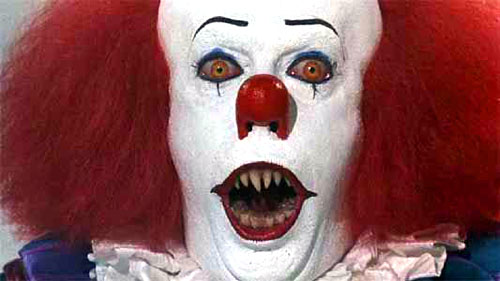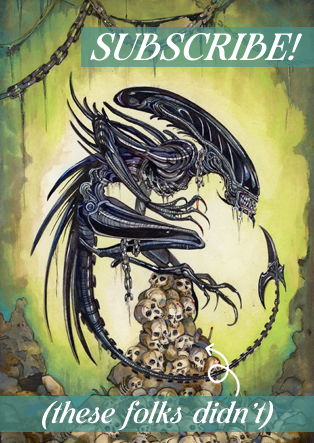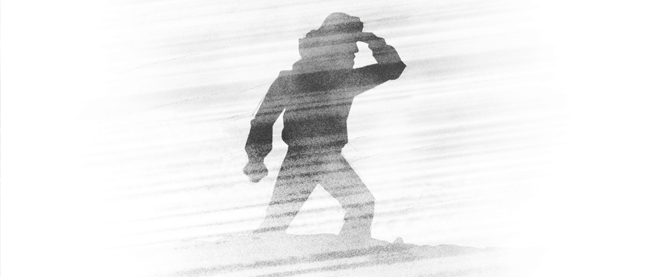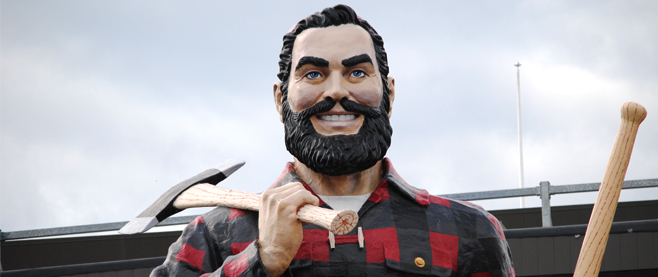
The American Culture of Horror: Folklore and Stephen King
Part 2: Fresh Folklore and the Modern Master
Isolation and the loss of self are the foundation of American horror.
From Poe’s obsession with death, the ultimate loss of will, to Lovecraft’s ancestral curses, the victims of which inevitably submit their wills to conform to the desires of forces much older and powerful, the proof in print is easy to see. In film, there are countless examples – The Wolfman and The Exorcist come immediately to mind.
America is a young country and unlike Europe and Asia, it is unburdened by centuries of mythology, tradition and taboo. Our native folklore is limited to the oral traditions of Native Americans and the jackalope, which affords us a fresh look at the things that frighten us. When old fears come visiting, American horror inevitably re-interprets them in new ways.
 Take the vampire.The classic European vampire is a creature of legend popularized in the 19th Century by Bram Stoker in Dracula. For the English, the count was the quintessential threat to the Empire, an exotic Continental foreigner hiding dark intent behind an exotic veneer. For many American authors, however, the vampire is reduced to an animalistic plague, crude beasts of craft and cunning but no nobility. The perfect example of this is the cabal of vampires who take over Barrow, Alaska in 30 Days of Night – where they stalk their victims in an isolated town and rob them of their true personalities by turning them into vampires themselves.
Take the vampire.The classic European vampire is a creature of legend popularized in the 19th Century by Bram Stoker in Dracula. For the English, the count was the quintessential threat to the Empire, an exotic Continental foreigner hiding dark intent behind an exotic veneer. For many American authors, however, the vampire is reduced to an animalistic plague, crude beasts of craft and cunning but no nobility. The perfect example of this is the cabal of vampires who take over Barrow, Alaska in 30 Days of Night – where they stalk their victims in an isolated town and rob them of their true personalities by turning them into vampires themselves.
The currents of isolation run deep in much of Stephen King’s best work.
Jack Torrance would not have gone mad if he hadn’t taken the job as the winter caretaker at the isolated Overlook Hotel in The Shining. In Salem’s Lot, the town of the same name is cut off from the rest of the world when a vampire who is more a cockroach than a count moves in. The Stand is a study in isolation set after a disease called Captain Trips has wiped out most of the world’s population.
Isolation can also take on less physical forms. The titular Carrie is isolated by her mother, but also by her strange abilities. Brain damage isolates Johnny Smith of The Dead Zone and Charlene’s mutant genetics do the same in Firestarter. Even knowledge alone can lead to isolation, as it does for 11-year-old wheelchair-bound Marty Coslaw, the only person in Tarker’s Mills who knows a werewolf is on the loose.
Through all of these stories, personal identities are first isolated and then subverted, transformed or destroyed. Most take familiar creatures and twist them into new threats. But nowhere does King weave all three strands together so perfectly as he does in It.

The story is complex. The Maine town of Derry is haunted by a creature that awakens every thirty years or so to feed on fear, eat children and drive the inhabitants of the town mad. The action is split between 1957, when a group of children battle the creature and 1985, when the creature awakens again and the same group, now adults, returns to stop It for good.
It has been hibernating in the wilderness of Maine since before mankind. The creature is exactly the kind of native supernatural threat the original European settlers feared existed in the primeval New England forests, but unlike blizzards and Indians, the threat of It didn’t diminish as the country developed and expanded. King weaves the creature’s long history in the area into a disturbing new tapestry of folklore and local legend.
The town of Derry’s dark past remained hidden from the outside world largely because It willed it to be so. People didn’t talk about the disasters and murders that plagued the town because that alien influence subverted the townsfolk’s natural desire to spread the story, cutting the town off from the rest of the world, after a fashion, even in the modern age of telephones and television.
The group of kids who fought It, who called themselves the Losers, found themselves isolated in another way. The creature may have murdered and psychically dominated adults, but it hardly ever appeared to them. With no one in authority figure to turn to who would even begin to believe them, the Losers were nearly helpless against the creature’s mind games.
The creature was also a shapeshifter, appearing mostly as a clown named Pennywise, but also as a monstrous spider, a floating eye, a werewolf and even other people, both living and dead. Pennywise used this ability to stoke the fears of its victims by personifying their most personal nightmares.
As Lovecraft said, it is the unknown that is at the root of all fear, so what could be more terrifying than something utterly unknowable, a thing without a true shape or form?’
Continue to Part 3: Three Things
~
Tune in tomorrow for the third part of The American Culture of Horror, when I look at The Thing and its place in the pantheon of horror films. In the meantime, know true fear and follow me on Twitter @StuHorvath.





